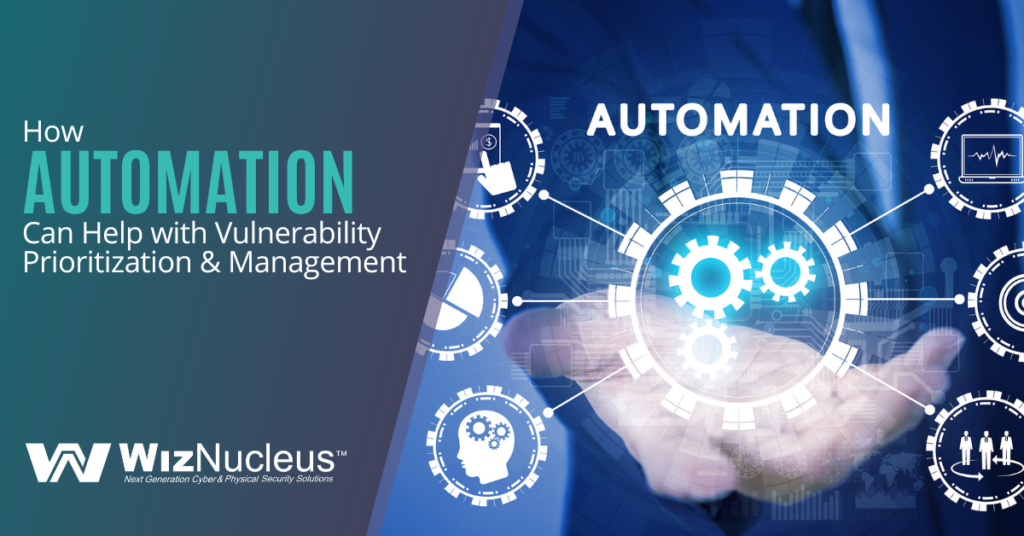Once a vulnerability is discovered, hackers waste no time launching attacks on as many organizations as possible to exploit it. And they’re not doing this manually. AI and machine learning aren’t only used by legitimate companies. Cybercriminals use them to conduct automated attacks that are unleashed in less time and take fewer resources to conduct.
According to “The State of Vulnerability Response in Government” report from ServiceNow and the Ponemon Institute, Over the last two years, the time window between a vulnerability patch being released and an attack has decreased by an average of 32%.
If you’re not automating your vulnerability management, then it’s going to be difficult to keep up.
Effective automation in vulnerability assessment and management means using the right tools and identifying where an automated process is going to provide the biggest benefits. Too often, mission-critical facilities waste time detecting issues because they’re still relying on manual processes.
If you want to ensure your cybersecurity strategy continues to stay relevant, then you need to employ automation, just like cyber criminals seeking out and attacking vulnerabilities do. Here are some of the key areas to consider for automation in your vulnerability management program.
Prioritization
Once vulnerabilities are identified, they need to be addressed. It’s not generally feasible to fix everything at once, so prioritization of those vulnerabilities is necessary. This moves the most critical vulnerabilities to the top of the list so they can be addressed first.
If you’re prioritizing manually, it can take hours or days. This is one place where automation can speed up the process and make it near instantaneous. Plus, you can easily choose prioritization variables, and then tweak them, without slowing down the process.
Automation makes it easier to customize the priority ratings rather than simply using the Common Vulnerability Scoring System (CVSS). You can use that as one factor, but then put other factors in place as well that are specific to your security stack.
CPE Matching
A Common Platform Enumeration (CPE) is a way of describing and categorizing classes of various applications, hardware, and operating systems in a network. When managing vulnerabilities, CPE matching connects an identified vulnerability with the CPE that it impacts.
This helps determine common sets of relationships and can inform the remediation process. CPE categorizing and matching also helps uncover vulnerabilities that may be subsets of another.
Trying to do all this manually can lead to things being missed and is very time-consuming. Automation can make this process more accurate as well as timelier.
Reporting
All of your vulnerability assessment and management activities should be documented and presented in meaningful reporting. This is vital for compliance as well as ongoing improvement and monitoring of your network security.
This is another area where automation can improve the process. Data that is collected and input into the system can automatically generate reports in real-time that are always updated with the latest information.
Ticket Creation & Assignment
When a vulnerability is identified, it needs to be assigned a ticket for issue resolution in the system and assigned to the appropriate resource to be handled. Bottlenecks can occur between an issue being identified and assigned if this process is being handled manually.
Automation can look at pre-programmed criteria to create a ticket and assign it to the appropriate entity as soon as a vulnerability is discovered.
Reduces Manual Labor
Doing your vulnerability assessment and management activities manually, doesn’t only put you at a time disadvantage, it also means higher labor costs. 55% of surveyed organizations say that their teams spend more time on manual processes than addressing vulnerabilities.
A majority of those organizations (53%) state that this puts them at a disadvantage to companies that use automation for these processes. This is both a competitive and security disadvantage. Cybersecurity is a key area where automation provides multiple benefits.
Quality & Accuracy
Manual processes lead to human error. An overtired technician may miscategorize a vulnerability or give it the wrong priority. These mistakes can leave your network at higher risk of a breach.
Automation frees up technical staff for more knowledge-based activities, rather than doing manual labor that can become tedious and mistake-prone.
Improved Response Times
The faster you can respond to a vulnerability, the more secure your network becomes. If there is a lag time between a patch being issued for a vulnerability and when that patch is actually installed, there is a prime window of opportunity for a hacker.
Automation significantly decreases response times because tasks that use to take hours can now be done in seconds. Additionally, you have control over how the automation works, so activities can be done according to your specifications, only much faster.
Use a Tool That Can Automate Multiple Vulnerability Management Tasks
Cyberwiz-Pro by WizNucleus offers comprehensive vulnerability management. It automated many tasks to reduce manual work and improve response times.
Contact us today to schedule a free consultation! Call +1 (646) 558-5577 (New York, NY) or +1 (469) 481-1726 (Carrollton, TX) or reach out online.





